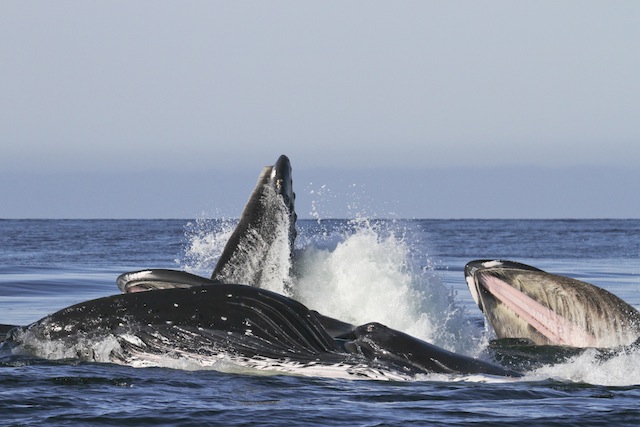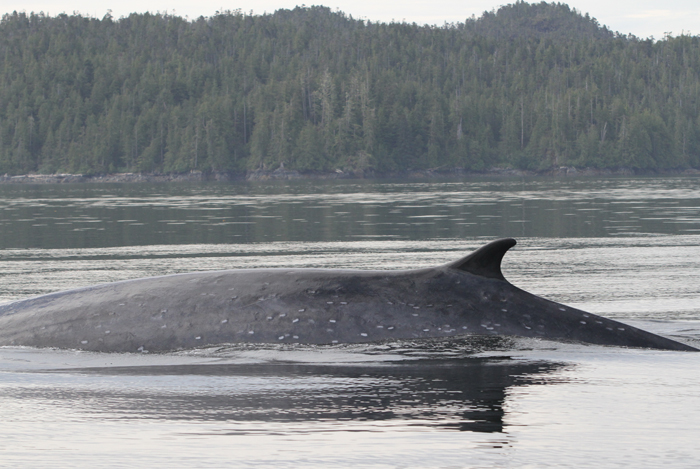Hello Reader!
I’m a PhD student in the Department of Geography, University of British Columbia. My research focuses on the socio-economic development of Caamano Sound over the last 200 years, with a particular attention to matters of sound. As well as listening to whales, I’ve been reading up on shipping histories, interviewing fellow interns, and trying to wrap my head around the logics of the hydrophone. This ‘report’ offers some preliminary thoughts on my experience as a Cetacea Lab intern (wonderful, as to be expected). If anything in it inspires, makes you curious, prompts some insight, or leaves you with questions of any sort - please let me know! I would love to hear from you. This e-mail address is being protected from spambots. You need JavaScript enabled to view it
Written By Max Ritts
A Whale Survey
Of course you love the orcas and the humpbacks and that movement they evoke: the rolling breaks and the wind riding the foamy hiss! It’s a grey August morning as we bank Squally Channel, a muffled patch of sunlight pivoting into view. Janie curls the boat to a halt 100 feet from the shore. Recording gear ready, I begin scanning the water for a pair of whale flukes.
“There she is” Janie calls. Click click click goes the SLR camera.
We’ve identified one of the humpbacks as Loner. As the name suggests, Loner usually feeds alone. “This is interesting,” Janie confirms. Within moments, a ring of bubbles begins forming on the water nearby. Salmon are being corralled from below and sent spiraling upwards. The ‘bubble-net’ grows bright blue and then two giant mouths, gaping-wide and fleshy pink, break the surface. “Whoa!” I gasp. Its not ‘magical’ or ‘majestic.’ Its strange, ponderous, and powerful. The humpbacks reemerge moments later to blow echoing blasts of misty air. And then they’re gone.
Listen to the blows, click below.

Caamano Calling
I’m sending this report from Cetacea Lab, a whale research station halfway up the BC coast. Back on land, I remain soaked in watery sound, immersed via stereo feed to a network of hydrophones drilled to the ocean floor. I’m listening to Caamano Sound 30 meters down: its aqueous stratum of warbles, bleeps and burblings. Most of my time is spent in the lab, looking through the window and listening. Jilann, a whale watch guide from Vancouver, enters data on the computer. Philipp, an engineering student from Switzerland, crouches on the floor, assembling his camera. Every summer, when pods of whales travel to BC’s coast from as far as Oahu, Cetacea Lab gathers interns from around the world to assist its activities.
My research encounters geography through the medium of sound, which I consider to be a uniquely expressive source for understanding the ways we shape the world and are shaped by it. For me, Caamano Sound functions like a gigantic resonator -- an area, like the inside of a guitar, detecting and intensifying frequencies. Resonators are not just ways of thinking about acoustics, but places, and the way they consolidate different frequencies of practice, positioning, and political economy. Powerful Gitga’at namings are inscribed into the lands around me -- conduits to worlds I cannot access. They are tied to the raven, eagle, orca, and wolf calls that also make this home. I’ve read stories of Spanish frigates sounding through these waters in the eighteenth century, and a BC Ferries vessel crashing to the seabed in 2006. One day there might be Passive Acoustic Monitoring stations as well -- remote sensors to guide supertankers around whales and shorelines and toward the open ocean.
I first heard of Cetacea Lab because of the Northern Gateway Pipeline: the tar sands delivery system that would transform Caamano Sound into a marine superhighway. Since the project’ proposal in 2005, life at Hermann Meuter and Janie Wray’s outfit has changed dramatically. Once a quiet endeavor, Cetacea Lab has become an outspoken part of the local resistance. Actions with NGOs have been worked into its travel schedules. Exchanges with Hartley Bay, the nearby Gitga’at village, transpire daily. Through it all, Caamano Sound’s fragile whale habitat -- harmed by increased boat noise, shattered by an oil spill of any magnitude -- has been raised to great political heights. My hypothesis is that our instrumental relationships with these creatures - how their voices feature in the voicing of our politics - is key to making sense of Caamano Sound.
Whale Time
Days go from 6am to 9pm, with visual scans every 15 minutes and data entry every 2 hrs, but so far as I’ve experienced it, whale science runs fundamentally on Whale Time. Whale Time means long periods of listening to nothing but empty signal. It also means kicking one’s way out of a tent at midnight to run to the lab and hit ‘record’. Humpback song can last for hours, and all the recordings and photos we’ve collected give Cetacea Lab months of material to sift through. Spreadsheet entry can make for long shifts, but there’s always the chance Hermann comes bursting through the door -- “Whales! Whales!” -- to send us all onto the balcony with binoculars and cameras. Moments just flow in these animal-encounters, counterpoints to the tight techno-rhythms of Human Time. Half-awake one brutally early morning, I heard Hermann’s big feet racing toward the lab before stopping outside my tent. “Wolves, Max! Wolves!”
Cetaceans of a New Age

Among the things I packed on this trip is a musical instrument called the Sensula. Its a variation on the Kalimba, the African thumb piano recently popularized by the likes of Grimes. My Sensula is tuned to a dreamy A-Minor Pentatonic, producing glassy shimmers and cross-fades when struck. There’s a fascinating history of humans attempting to communicate with whales via jazz flutes and guitars; elaborate hookups aboard floating barges. My plan to teach myself the Sensula was a bit of a self-joke, but playing it has provided field-notes for understanding the ethos that characterized those hopeful endeavors. New Age easily tends toward the shallow and self-indulgent, but I think its guiding message rings true - we are in a New Age. Big changes lie on Caamano Sound’s horizon: an LNG project will see more ships charting through in the coming years; counts of orca and humpback continue to project upwards -- with fin whales now among their number. Hartley Bay is planning a host of economic initiatives, but they all depend on stopping a pipeline backed by Prime Minister with a fondness for cruelty. Cetacea Lab is a good place to begin listening in. The dedication here is inspiring.


